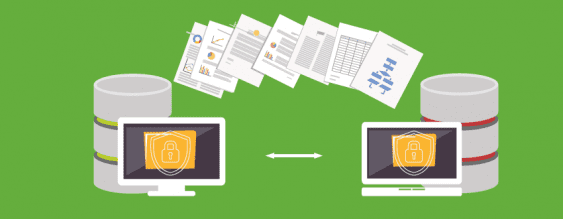PGP, GPG, GnuPG, Open PGP. These terms file under the same category but refer to slightly different things. If you’re wondering what they mean or what the difference is between them, especially PGP vs. GPG, you’re not alone! Read this article to get a better feel for these standards and their nuances.
PGP – Pretty Good Privacy
PGP stands for Pretty Good Privacy. It was created in the 1990s and is currently owned by security software company Symantec. Over the course of nearly three decades, PGP has been developed, improved, and updated, making it the standard option for file encryption today.
PGP uses several encryption technologies, like hashing, data compression, and public/private PGP keys to protect an organization’s critical information (i.e., the company’s crown jewels). While it’s often used to encrypt files before exchanging them with trading partners or remote locations, PGP can also encrypt emails, directories, and disk partitions, so it’s a fitting solution for modern cybersecurity needs.
What about Open PGP?
PGP is the backbone of Open PGP, which is an open source standard that allows PGP to be used in software that is typically free to the public. The term “Open PGP” is often applied to tools, features, or solutions that support open-source PGP encryption technology.
Vendors who want to include Open PGP in their solutions must follow IETF (Internet Engineering Task Force) standards and integrate well with other Open PGP-compliant software vendors. If you’re in the market for an Open PGP tool, vendors who are members of the Open PGP Alliance will give you confidence that your files can be decrypted and verified by other IETF standard Open PGP solutions
GPG – GNU Privacy Guard
GPG, or GnuPG, stands for GNU Privacy Guard. GPG is a different implementation of the Open PGP standard and a strong alternative to Symantec’s official PGP software.
GPG is defined by RFC 4880 (the official name for the Open PGP standard). The GPG Project provides the tools and libraries to allows users to interface with a GUI or command line to integrate encryption with emails and operating systems like Linux. GPG can open and decrypt files encrypted by PGP or Open PGP, meaning it works well with other products.
What’s the Difference Between PGP and GPG?
PGP is a proprietary solution owned by Symantec, and GPG is an open source standard. Functionally, each format are virtually identical.
If you’re looking for a free PGP tool that supports basic encryption, decryption, file signing, and document verification, GoAnywhere Open PGP Studio is a perfect desktop solution for IT users and teams.
If you need to integrate your PGP encryption/decryption processes into a solution that also supports enterprise-level compliance, automation, auditing, reporting, and more, GoAnywhere Managed File Transfer supports Open PGP encryption alongside industry-standard file transfer protocols, internal collaboration features, and robust security settings.
Protect Your Files in Transit and at Rest
GoAnywhere products supports Open PGP and GPG. You can start a free, 30-day trial of GoAnywhere MFT for an enterprise solution, or download our Open PGP Studio to get started with free desktop file encryption today.




